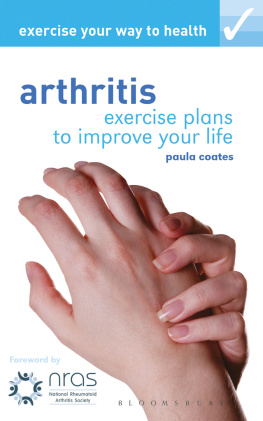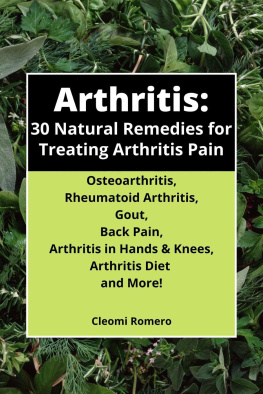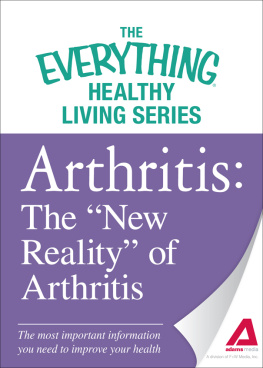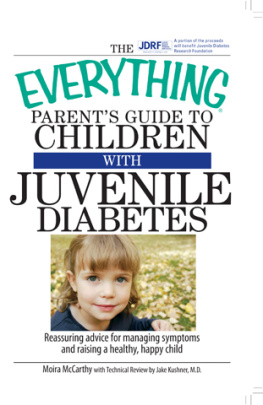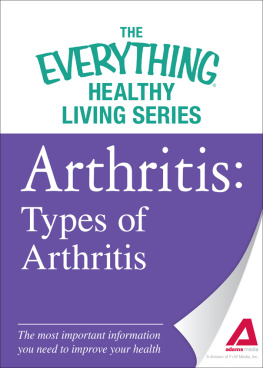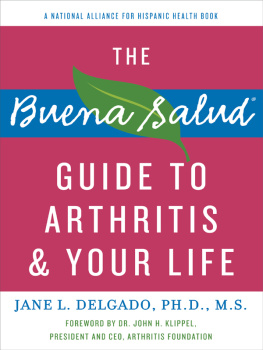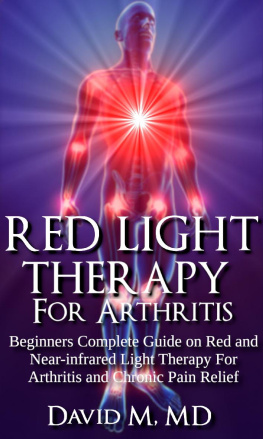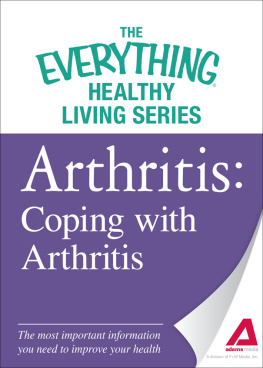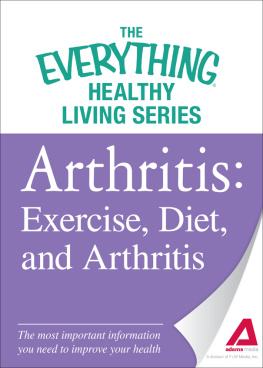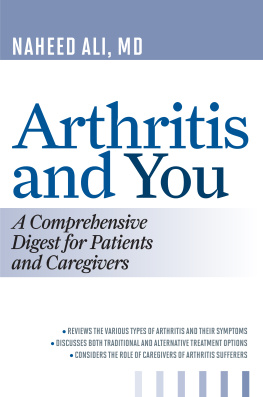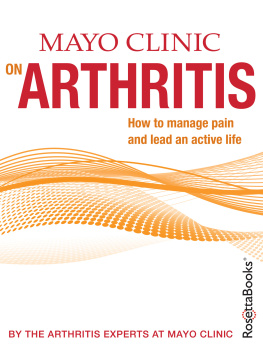LIVING WITH
JUVENILE
ARTHRITIS
A Parents Guide
Kimberly Poston Miller

Copyright 2013 Kimberly Poston Miller
All rights reserved under International and
Pan American Copyright Conventions.
No part of this book may be reproduced or transmitted in any form or by any means electronic or mechanical including photocopying, recording, or by any information storage and retrieval system, without permission in writing from the publisher.
This edition is published by Spry Publishing LLC
2500 South State Street
Ann Arbor, MI 48104 USA
10 9 8 7 6 5 4 3 2 1
Library of Congress Control Number: 2013937936
eBook ISBN: 978-1-938170-25-6
Disclaimer: Spry Publishing LLC does not assume responsibility for the contents or opinions expressed herein. Although every precaution is taken to ensure that information is accurate as of the date of publication, differences of opinion exist. The opinions expressed herein are those of the author and do not necessarily reflect the views of the publisher. The information contained in this book is not intended to replace professional advisement of an individuals doctor prior to beginning or changing an individuals course of treatment.
This book is dedicated to my sons,
along with the hundreds of thousands of children
who bravely battle this disease every day
you are my heroes.
Contents
T hese days, whenever I turn on the TV or pick up a newspaper, theres a story about autoimmunity or autoimmune disease. But that was not always the case. When I founded the American Autoimmune Related Diseases Association, Inc. (AARDA) back in 1990, these terms were not part of the public dialogue.
Juvenile arthritis (JA) is one of the many autoimmune conditions that are increasing at a rapid rate. Often misunderstood as an older persons affliction, or just aches and pains, the general public doesnt always understand that this disease is an autoimmune condition that can affect children from infants to teens.
Whether juvenile arthritis, multiple sclerosis, celiac disease, psoriasis, type 1 diabetes, or Graves disease, the pathology is the samea malfunctioning immune system. When youre healthy, your immune system creates an army of antibodies that fight off foreign invaders such as viruses and bacteria. When you have an autoimmune disease (AD), your immune system creates the same kind of army, only it mistakenly recognizes healthy tissue and organs as foreign invaders and attacks them, producing disease.
Autoimmune diseases, whether rheumatic, dermatologic, or endocrine, share a genetic background so they tend to run in families. They also cluster in individual patients. Thus, it is not uncommon for patients to have multiple ADs. Of the more than 50 million Americans who live and cope with these diseases, many of them are children. Today, roughly 100 ADs have been identified. Together, they are responsible for more than $100 billion in direct healthcare costs annually.
Ive heard it said AD is not common in children. Our experience at AARDA has been quite the opposite. Over the years, weve heard from many parents with children who have been diagnosed with ADs. The problem is there havent been many epidemiological studies on ADs in children (or adults, for that matter), so there is no accurate tracking of the numbers of kids actually affected. Like adults with ADs, getting a proper diagnosis for a child with an AD can be a frustrating and lengthy process that takes years with many visits to various specialists.
Parents of children with ADs also face a unique set of challenges and frustrations. I would say the biggest challenge is overseeing and coordinating their care because, ultimately, this responsibility lies with the parents. Children, like adults, often have multiple ADs. For example, a child with lupus (a condition under the juvenile arthritis umbrella) may also have type 1 diabetes. The rheumatologist treating the lupus may want to put the child on steroids, which is not as desirable to the endocrinologist treating the diabetes, since steroids can affect blood sugar levels. It is then up to the parents to make the decision and resolve this treatment conflict. And its not an easy choice.
Making decisions about the new therapies available to treat ADs such as JA is also a challenge. Many of these therapies have not yet been tested in children. They may have a high benefit, but they also come with some degree of risk. Again, something parents must weigh and then decide.
Frustration is also part of the equation. Ive talked to parents whose children have Crohns disease, for example, who are at their wits end because the childs teachers dont seem to realize the urgency and potential embarrassment involved with this disease. When a child raises his or her hand and says they need to use the bathroom, they mean they need to use the bathroom now. If this happens repeatedly throughout the day, and if the teacher remarks on it, the class can become involved and the ridicule can start. Its a very unfortunate situation.
I raise my glass to the parents who find themselves raising a child with juvenile arthritis or any other autoimmune disease. It is a difficult task, there are no clear cut directions to follow, and no one right way to proceed. It can be overwhelming, at best.
Living with Juvenile Arthritis: A Parents Guide helps families find their way through this uncharted territory, with solid advice from families who have been there. From actual disease management to ancillary lifestyle changes and situational advice unique to childhood, Kimberly Poston Millers book will not disappoint parents who are looking for guidance on managing more than the medical portion of their childs disease; it is a guide to healing the whole child and learning to live, and even thrive, under these difficult circumstances.
Virginia T. Ladd
Founder and President
American Autoimmune Related Diseases Association
S o your child has been diagnosed with juvenile arthritis. Now what? I know you may be feeling sad, angry, confused, and helpless. I remember those feelings well. I also remember wishing for a step-by-step instruction manual. Unfortunately, like most things in life, this diagnosis doesnt come with directions. If youre looking for a medical guide, youve come to the wrong place. However, if youre looking for answers to some of the other tough questions faced by parents of children with juvenile arthritis (JA), I can help you find them.
I can help you because Im one of you. I have two children diagnosed with different forms of JA, and although Im not a doctor or nurse, I often joke about being a medical paraprofessional. Just ask my pediatrician! And, I guarantee that over the coming weeks, months, or even years, youll find yourself becoming one as well. Let me also assure you that youll do better than you think you can.
Although every case of JA is different, many of the issues are the same. I learned so much the hard way, which is why I decided to write this book. By sharing my familys experiences with you, I hope I can help you avoid a few common mistakes, provide some much-needed support, and help you make peace with this diagnosisin all aspects of your childs life. My wish is that this book will guide you through those unknown and sometimes frightening days after diagnosis, as well as the long and twisty road ahead. I want to help you learn to deal with the medical community effectively, so you can build a good healthcare team and make sense of insurance issues. I want to give you the tools you need to soften the impact your childs condition will have on family and friends and help you deal with the emotional roller coaster you will inevitably face. I want to teach you to create good social and educational opportunities for your children if circumstances become difficult. Most importantly, I want to help you lessen the toll this disease can have on your childrenboth the ones who are ill, and the ones who are notbecause this diagnosis is a family affair.


